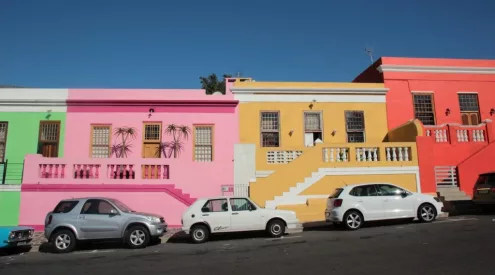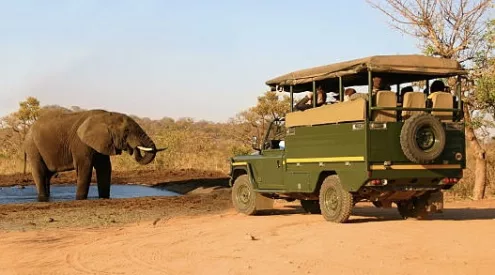Trees, and especially forests, in urban areas are often dubbed the lungs of a city. They clean air, keep soil and water stable, tackle climate change and support biodiversity. They provide habitat for wildlife and regulate the city’s temperature. Plus, they’re beautiful too. Here are six cities around the world with gorgeous green havens breathing life into them.
1. Nairobi, Kenya
‘The Green City in the Sun’ is surrounded by rainforests and savannah grasslands, but its suburban forests are what breathes life into this concrete jungle. It has three forests in surrounding suburbs: Karura, Ngong and Oloolua. In the 1990s, these forests were threatened by development but were saved thanks to a campaign led by Wangari Maathai, the first African woman to receive the Nobel Peace Prize.
The forests are home to Syke’s monkeys, bushbuck, duiker, bush pig, and civet. Karura has streams running down to reach a waterfall and caves at the bottom of the Karura River valley, and Oloolua also has waterfalls along its trail.
https://www.instagram.com/p/BzBj1myFFh9/
https://www.instagram.com/p/BzAQSDUnEWT/
2. Dublin, Ireland
This city has been planting trees intensively for the past 50 years and is reaping the benefits. It has a range of inner-city woodlands which are free to enter as well as the largest enclosed public park in any European Capital City. The Native Tree Trails take visitors and locals alike on an education walk through the history and folklore of the trees – some are ‘sacred’, and given special protection because of their link to ancient monuments, wells or faeries.
https://www.instagram.com/p/Byf57McI3oQ/
https://www.instagram.com/p/By13ODtBags/
3. Cali, Colombia
There is an entire pristine jungle within this city’s limits – almost 200,000 hectares of it, in fact. Because of this, Cali is the city with the largest diversity of birds in Colombia, with 591 reported species. In addition, the city is surrounded by seven rivers.
https://www.instagram.com/p/BmWpdP7BpfP/
https://www.instagram.com/p/ByQE44SnDzn/
4. Auckland, New Zealand
Although this area used to be covered in tall forest, this vegetation is now concentrated in just a few pockets around the city. The Chatswood-Birkenhead area has a network of reserves which is home to the kauri tree. This type of tree was considered the king of New Zealand’s forest by the Māori. They can grow to be 50 metres tall and live for more than 1,000 years. The age of the kauri trees in Auckland range from 150 to 400 years, but they are still giants.
https://www.instagram.com/p/Bvx1wQvFZc5/
https://www.instagram.com/p/BnKrqElHNSD/
5. Brussels, Belgium
This city is working hard to create new urban forests within its limits. Each year, residents are organised to plant indigenous trees in a new segment of the city, and Brussels is working on a network of pathways to link these green hubs. In addition, the city encourages residents to use every possible space outside to grow a garden, be it on a balcony, rooftop or under trees on the pavements. The city supports far-off forests too – for every 3,000 babies born in the city, they plant a tree in Africa or South America.
https://www.instagram.com/p/Bxc4zuIIL-n/
https://www.instagram.com/p/Byk_uW6FFQJ/
6. Singapore
An island, country and city all in one, Singapore calls itself the ‘Garden City’, and perhaps for good reason. Its most iconic green space is the Gardens by the Bay with its metal plant-covered lattices which go up 16 storeys. However, the biggest park in Singapore is the East Coast Park which covers two square kilometres of reclaimed waterfront land. The city’s oldest gardens, the Singapore Botanic Gardens, house a top-notch orchid research centre, while one park, MacRitchie Reservoir, is a great place to hike – you might even be joined by lemurs and and monkeys here. The list of parks in Singapore goes on and on…
https://www.instagram.com/p/BzH8xEwFwmC/
https://www.instagram.com/p/BzGJYUmA4AV/
Feature image: Victor Garcia.
















